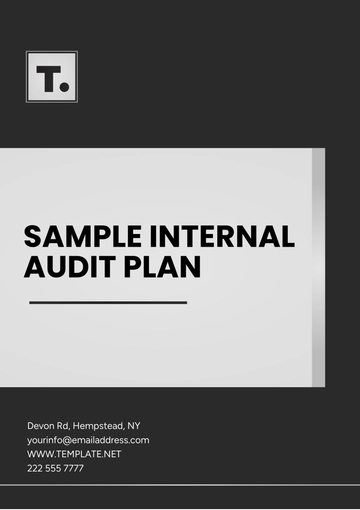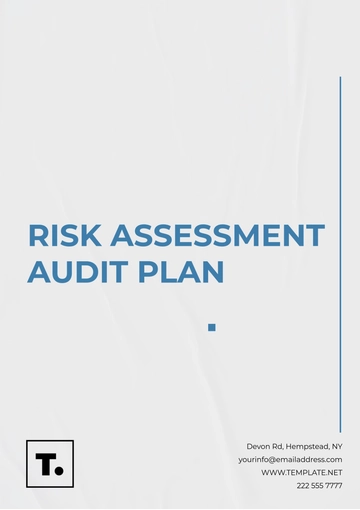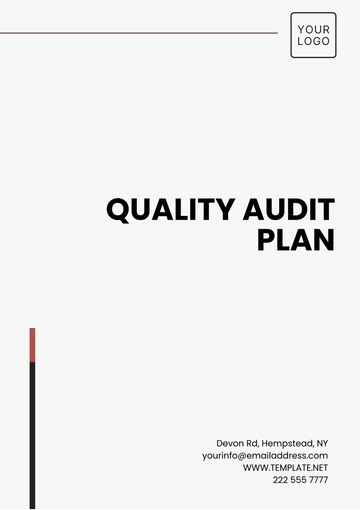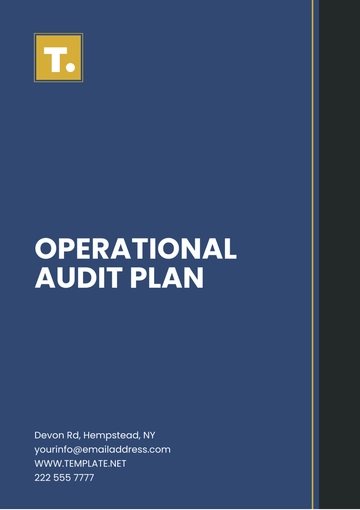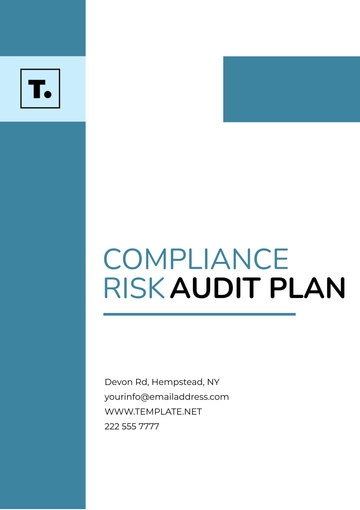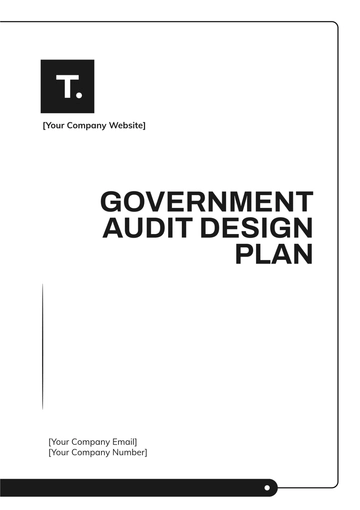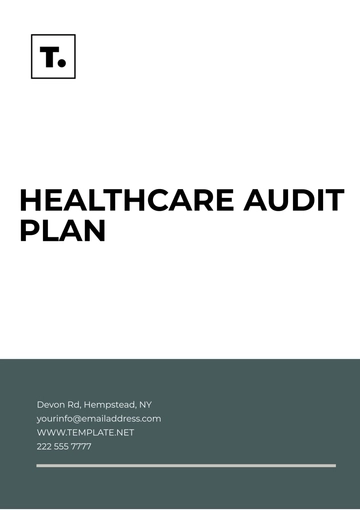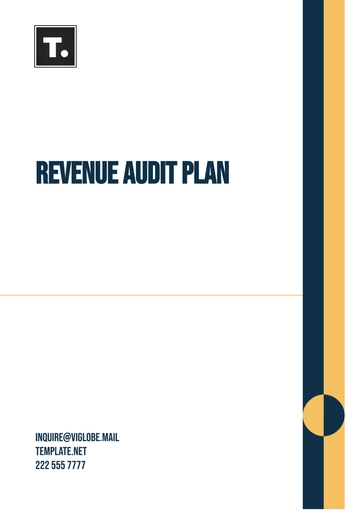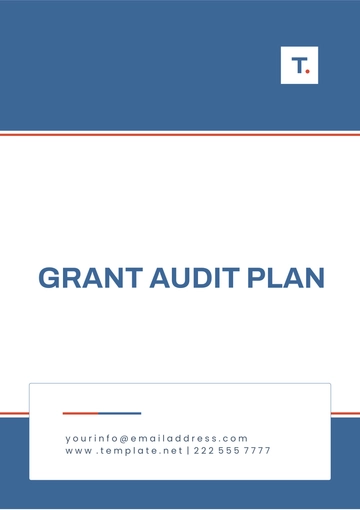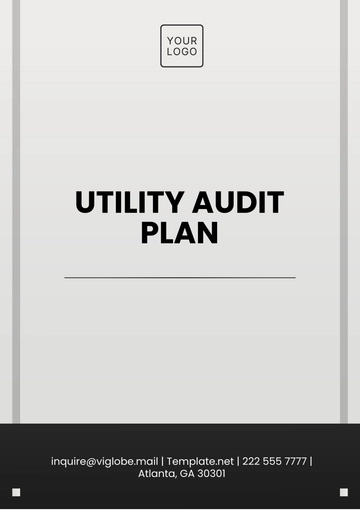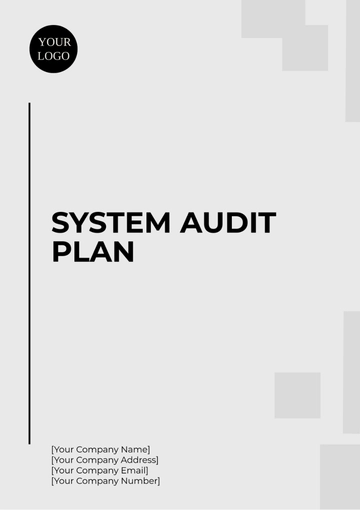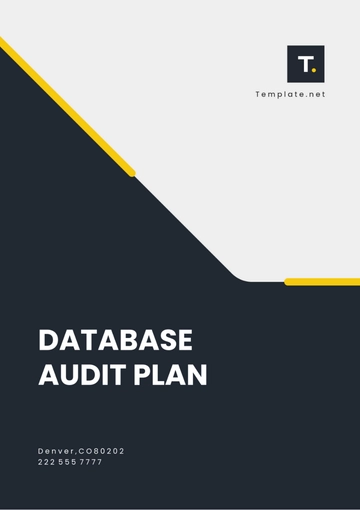Free Finance Audit System Restructuring Plan
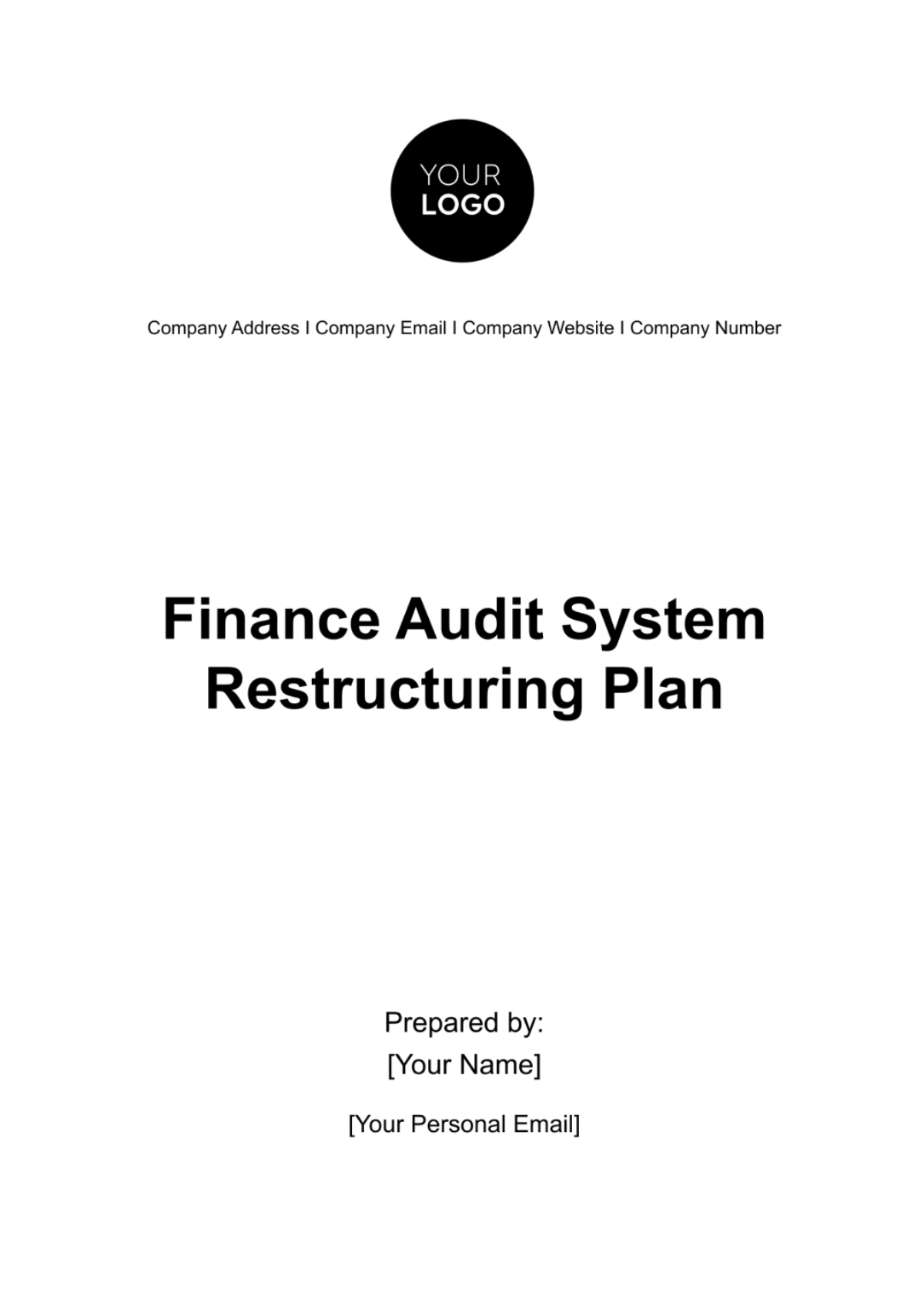
I. Introduction
As we navigate the ever-evolving landscape of financial management, it becomes imperative for our organization to reassess and restructure our finance audit system. With advancements in technology, changes in regulatory frameworks, and the dynamic nature of the financial industry, our organization recognizes the importance of a robust and agile finance audit system. The restructuring plan serves as a strategic response to these challenges, positioning us to proactively address emerging complexities in the financial landscape.
II. Purpose and Scope
A. Purpose
Enhance Audit Accuracy
Implement advanced technologies and methodologies to improve the accuracy and precision of financial audits. This includes the integration of data analytics and artificial intelligence to identify anomalies and ensure a more thorough audit process.
Strengthen Compliance Measures
Enhance our finance audit system to ensure strict compliance with evolving regulatory standards. This involves regular updates to align our processes with changes in financial regulations, reducing the risk of non-compliance and associated penalties.
Optimize Resource Utilization
Streamline resource allocation by identifying and eliminating redundancies in the current finance audit system. Optimization will enhance the efficiency of audit teams, allowing for more focused efforts on high-priority areas and improving overall resource productivity.
B. Scope
This plan will focus on reorganizing and optimizing our internal financial audit processes. This initiative will cover all aspects of the finance audit system, including but not limited to technology, personnel, and procedural frameworks. It is essential to note that this plan's scope does not encompass broader organizational restructuring but specifically targets improvements within the finance audit function. The restructuring efforts will be carried out with a commitment to minimizing disruptions to ongoing operations, ensuring a smooth transition to the enhanced finance audit system.
III. Current State Assessment
The current state assessment is a crucial phase in our restructuring plan, providing an in-depth analysis of our existing financial audit system. The table below outlines key components of this assessment, detailing various aspects that will be systematically evaluated:
Aspect | Current Status | Strengths | Weaknesses | Potential Improvements |
Technological Framework | Legacy systems | Solid historical data storage and retrieval | Lack of real-time capabilities; Limited automation | Upgrade to a modernized, integrated system with real-time features |
The current state assessment reveals that our finance audit system relies on legacy technological frameworks. While these systems have served us well in terms of historical data storage and retrieval, they exhibit limitations in real-time capabilities and automation. The reliance on outdated technology poses a challenge in keeping pace with the dynamic nature of financial audits. To address this, a crucial improvement lies in upgrading to a modernized, integrated system with real-time features. This upgrade will not only enhance the efficiency of our audit processes but also empower our teams with the ability to access and analyze data in real-time, facilitating quicker and more informed decision-making.
Additionally, automation features will alleviate the burden of manual tasks, allowing our personnel to focus on more complex and value-added aspects of financial audits. The technological upgrade is pivotal in ensuring that our finance audit system aligns with industry standards and remains adaptable to future advancements.
IV. Gap Analysis
Gap Analysis is a pivotal stage in our plan, aiming to identify disparities between the current state of our finance audit system and the desired future state. The table below outlines specific gaps in various aspects, providing insights into areas that require strategic attention and improvement:
Aspect | Future State | Identified Gaps | Strategic Actions |
Technological Framework | Modernized systems | Lack of real-time capabilities, Limited automation | Implement a comprehensive upgrade to modernized systems with real-time features |
The current state of our technological framework relies on legacy systems, lacking real-time capabilities and automation. The identified gap signifies the need for a comprehensive upgrade to modernized systems equipped with real-time features. This transformation is essential to bridge the technological disparity and ensure that our finance audit system aligns with industry standards. By implementing advanced technologies, we not only address existing limitations but also position ourselves to adapt to future advancements in the financial audit landscape. This strategic action enhances our overall technological resilience and responsiveness, fostering a more efficient and adaptable finance audit system.
V. Restructuring Strategies
In this pivotal phase of our plan, identified gaps lead to comprehensive strategies aimed at transforming our finance audit system. The strategies that we will implement are the following:
A. Comprehensive System Upgrade
Upgrade to modernized systems, incorporating real-time features and advanced automation.
Integrate cutting-edge technologies, such as machine learning and artificial intelligence, to enhance the efficiency of audit processes.
Ensure seamless compatibility with evolving industry standards and future technological advancements to future-proof our finance audit system.
B. Integration of Cloud Solutions
Explore and integrate cloud-based solutions to enhance accessibility, collaboration, and scalability in the audit processes.
Leverage cloud computing for data storage and processing, allowing for increased flexibility and adaptability.
Implement robust security measures to ensure the integrity and confidentiality of data stored in the cloud.
C. Implementation of Predictive Analytics
Incorporate predictive analytics tools to forecast potential audit risks and identify anomalies in financial data.
Utilize data-driven insights to proactively address emerging issues, improving the overall effectiveness of the audit process.
Provide training to audit teams on utilizing predictive analytics tools for more informed decision-making.
D. Mentorship and Knowledge Sharing
Establish mentorship programs within the audit team to facilitate knowledge sharing and skill transfer.
Encourage experienced team members to mentor junior staff, fostering a collaborative learning environment.
Implement regular knowledge-sharing sessions and forums to enhance the collective expertise of the audit team.
E. Automation of Routine Tasks
Identify and automate routine and repetitive tasks within the audit processes to improve efficiency.
Implement robotic process automation (RPA) to streamline data extraction, analysis, and reporting.
Allocate freed-up resources to more complex and value-added aspects of the audit.
VI. Implementation Plan
The plan marks a crucial phase in our restructuring initiative, detailing specific actions and timelines for executing the identified strategies. The table below outlines key milestones and tasks essential for a seamless implementation process:
Milestone/ Task | Responsible Party | Timeline | Status | Notes/ Comments |
Technological Upgrade | IT Department | 6 months | In Progress | Upgrading legacy systems to modernized ones with real-time features. |
The technological upgrade, spearheaded by the IT department over a six-month period, is a critical milestone in ensuring the successful implementation of the restructuring plan. This involves transitioning from legacy systems to modernized ones with real-time features, addressing the identified gap in the technological framework. The progress status indicates that the upgrade is currently in progress, signifying a proactive approach to embracing advanced technologies within the specified timeline.
The nature of the plan reflects a strategic and well-organized approach to the implementation process, considering the responsibilities of various parties, realistic timelines, and ongoing status updates. Successful execution of this plan is critical to the overall success of the restructuring initiative, positioning our finance audit system for enhanced efficiency, technological excellence, and compliance adherence.
VII. Communication Plan
A robust communication plan is essential to ensure transparent and effective dissemination of information regarding the restructuring. The table below outlines key communication milestones, responsible parties, channels, and expected outcomes:
Milestone | Responsible Party | Channel | Timeline | Expected Outcome |
Project Kick-off Announcement | Project Manager | Email, Town Hall Meetings | Immediate | Generate awareness and enthusiasm among all stakeholders regarding the initiation of the restructuring project. |
The announcement of the project kick-off, led by the Project Manager, is a crucial milestone communicated through emails and town hall meetings. Completed immediately, this initiative aimed to generate awareness and enthusiasm among stakeholders about the initiation of the restructuring project. The town hall meeting provided an overview of the project, fostering a sense of unity and alignment among the team members.
VIII. Resource Allocation
A. Human Resources
Efficient allocation of human resources is crucial as it ensures that individuals with the right skills and expertise are assigned to specific roles for the plan. The table below showcases our allocation in human resource:
Resource Category | Roles/ Departments | Allocation (FTE) | Responsibilities |
Project Management | Project Manager, Support Team | 1.5 FTE | Oversee and coordinate all aspects of the restructuring plan, ensuring timely execution and stakeholder alignment. |
The allocation of 1.5 Full-Time Equivalents (FTE) to the Project Management category involves the Project Manager overseeing and coordinating all aspects of the restructuring plan. The support team, contributing 0.5 FTE, assists in administrative tasks, ensuring the efficient execution of the plan. This allocation underscores the critical role of effective project management in guiding the restructuring initiatives to successful completion.
B. Financial Resources
The allocation of financial resources is pivotal for the successful execution of the restructuring plan. The table below showcases the detailed allocation:
Resource Category | Expense Items | Allocation | Purpose/ Expenditure Details |
Technology Upgrade | Software Licenses and Hardware Upgrades | $800,000 | Procure necessary software licenses and upgrade hardware components for the technological upgrade. |
Adequate financial allocation ensures the procurement of necessary materials facilitating the seamless implementation of technological advancements. An allocation of $800,000 is designated for the technology upgrade covering expenses related to software licenses and hardware upgrades. This investment reflects the commitment to modernizing the technological infrastructure, ensuring the organization's readiness for future challenges and opportunities.
IX. Conclusion
In conclusion, the restructuring plan represents a comprehensive and strategic roadmap aimed at elevating the organization's audit capabilities. Through meticulous resource allocation, identification of gaps and carrying out restructuring strategies the plan is poised to enhance technological infrastructure, upskill the audit team, and improve communication channels. The significance of this plan lies not only in its immediate impact on operational efficiency but also in its potential to foster a culture of continuous improvement within the finance and audit functions. As the organization embarks on this transformative journey, the plan stands as a testament to its commitment to adaptability, innovation, and sustained excellence in financial auditing.
- 100% Customizable, free editor
- Access 1 Million+ Templates, photo’s & graphics
- Download or share as a template
- Click and replace photos, graphics, text, backgrounds
- Resize, crop, AI write & more
- Access advanced editor
Restructure your audit system with our Finance Audit System Restructuring Plan Template from Template.net! This dynamic plan, easily customizable with the intuitive AI Editor Tool, ensures a comprehensive approach. Tailor it dynamically for user-friendly clarity and efficiency in your audit system restructuring. Optimize your audit processes with this editable template!
You may also like
- Finance Plan
- Construction Plan
- Sales Plan
- Development Plan
- Career Plan
- Budget Plan
- HR Plan
- Education Plan
- Transition Plan
- Work Plan
- Training Plan
- Communication Plan
- Operation Plan
- Health And Safety Plan
- Strategy Plan
- Professional Development Plan
- Advertising Plan
- Risk Management Plan
- Restaurant Plan
- School Plan
- Nursing Home Patient Care Plan
- Nursing Care Plan
- Plan Event
- Startup Plan
- Social Media Plan
- Staffing Plan
- Annual Plan
- Content Plan
- Payment Plan
- Implementation Plan
- Hotel Plan
- Workout Plan
- Accounting Plan
- Campaign Plan
- Essay Plan
- 30 60 90 Day Plan
- Research Plan
- Recruitment Plan
- 90 Day Plan
- Quarterly Plan
- Emergency Plan
- 5 Year Plan
- Gym Plan
- Personal Plan
- IT and Software Plan
- Treatment Plan
- Real Estate Plan
- Law Firm Plan
- Healthcare Plan
- Improvement Plan
- Media Plan
- 5 Year Business Plan
- Learning Plan
- Marketing Campaign Plan
- Travel Agency Plan
- Cleaning Services Plan
- Interior Design Plan
- Performance Plan
- PR Plan
- Birth Plan
- Life Plan
- SEO Plan
- Disaster Recovery Plan
- Continuity Plan
- Launch Plan
- Legal Plan
- Behavior Plan
- Performance Improvement Plan
- Salon Plan
- Security Plan
- Security Management Plan
- Employee Development Plan
- Quality Plan
- Service Improvement Plan
- Growth Plan
- Incident Response Plan
- Basketball Plan
- Emergency Action Plan
- Product Launch Plan
- Spa Plan
- Employee Training Plan
- Data Analysis Plan
- Employee Action Plan
- Territory Plan
- Audit Plan
- Classroom Plan
- Activity Plan
- Parenting Plan
- Care Plan
- Project Execution Plan
- Exercise Plan
- Internship Plan
- Software Development Plan
- Continuous Improvement Plan
- Leave Plan
- 90 Day Sales Plan
- Advertising Agency Plan
- Employee Transition Plan
- Smart Action Plan
- Workplace Safety Plan
- Behavior Change Plan
- Contingency Plan
- Continuity of Operations Plan
- Health Plan
- Quality Control Plan
- Self Plan
- Sports Development Plan
- Change Management Plan
- Ecommerce Plan
- Personal Financial Plan
- Process Improvement Plan
- 30-60-90 Day Sales Plan
- Crisis Management Plan
- Engagement Plan
- Execution Plan
- Pandemic Plan
- Quality Assurance Plan
- Service Continuity Plan
- Agile Project Plan
- Fundraising Plan
- Job Transition Plan
- Asset Maintenance Plan
- Maintenance Plan
- Software Test Plan
- Staff Training and Development Plan
- 3 Year Plan
- Brand Activation Plan
- Release Plan
- Resource Plan
- Risk Mitigation Plan
- Teacher Plan
- 30 60 90 Day Plan for New Manager
- Food Safety Plan
- Food Truck Plan
- Hiring Plan
- Quality Management Plan
- Wellness Plan
- Behavior Intervention Plan
- Bonus Plan
- Investment Plan
- Maternity Leave Plan
- Pandemic Response Plan
- Succession Planning
- Coaching Plan
- Configuration Management Plan
- Remote Work Plan
- Self Care Plan
- Teaching Plan
- 100-Day Plan
- HACCP Plan
- Student Plan
- Sustainability Plan
- 30 60 90 Day Plan for Interview
- Access Plan
- Site Specific Safety Plan


